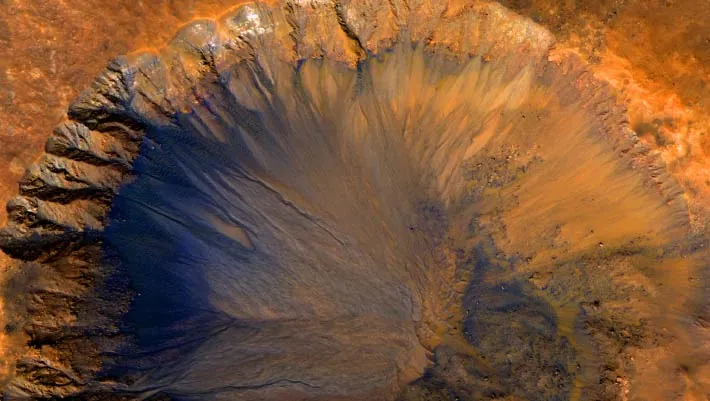
Breakthrough Discovery: Mars' Slope Streaks Aren't Wet After All!
2025-05-26
Author: Wei Ling
In a game-changing revelation, researchers at Brown University and the University of Bern have radically shifted our understanding of the mysterious slope streaks on Mars. Once thought to be indicators of liquid flows—hinting at potentially habitable conditions—new findings suggest these streaks are likely the result of dry processes involving wind and dust.
What Are Slope Streaks?
Slope streaks are dark, enigmatic lines that snake down the Martian terrain, first identified through images from NASA's Viking mission in the 1970s. These features vary in lifespan; while some linger for years, others vanish in a blink. The more transient ones, known as recurring slope lineae (RSL), seem to thrive during the warmer seasons of Mars.
Research That Shakes Up Assumptions!
In pursuit of clarity on these peculiar formations, Dr. Adomas Valantinas and his colleague Dr. Valentin Bickel employed advanced machine learning to meticulously map a staggering 500,000 slope streaks from over 86,000 high-resolution satellite images.
Their groundbreaking study utilized geostatistical analysis to reveal that these streaks and RSLs align with increased wind speeds and dust accumulation, not conditions conducive to liquid water or frost. This key insight challenges the long-held belief that these features could signify wet, habitable regions.
Implications for Mars Exploration
The findings represent a significant pivot for future Mars missions. With slope streaks unlikely to be habitable, NASA can more safely design exploratory missions without the fear of contaminating potential life-supporting environments with Earth microbes.
The Bottom Line
This transformative research not only reshapes our understanding of the Martian landscape but also impacts how we approach the search for life on the Red Planet. As Dr. Valantinas aptly puts it, 'It helps us to rule out some hypotheses from orbit before we send spacecraft to explore.'
Published on May 19, 2025, in *Nature Communications*, this study serves as a reminder of how evolving technologies can lead to spectacular new insights about our neighboring planet.


 Brasil (PT)
Brasil (PT)
 Canada (EN)
Canada (EN)
 Chile (ES)
Chile (ES)
 Česko (CS)
Česko (CS)
 대한민국 (KO)
대한민국 (KO)
 España (ES)
España (ES)
 France (FR)
France (FR)
 Hong Kong (EN)
Hong Kong (EN)
 Italia (IT)
Italia (IT)
 日本 (JA)
日本 (JA)
 Magyarország (HU)
Magyarország (HU)
 Norge (NO)
Norge (NO)
 Polska (PL)
Polska (PL)
 Schweiz (DE)
Schweiz (DE)
 Singapore (EN)
Singapore (EN)
 Sverige (SV)
Sverige (SV)
 Suomi (FI)
Suomi (FI)
 Türkiye (TR)
Türkiye (TR)
 الإمارات العربية المتحدة (AR)
الإمارات العربية المتحدة (AR)